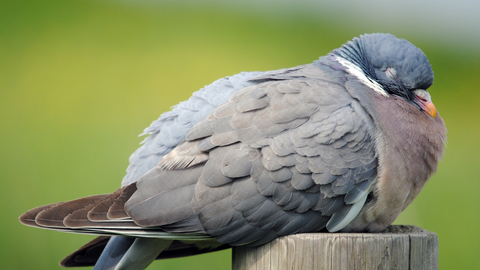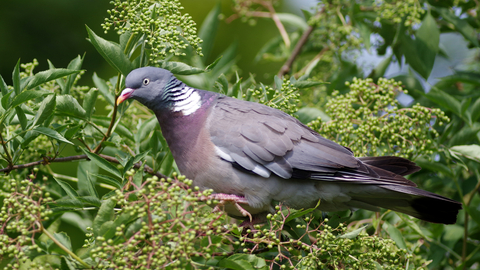
©Amy Lewis

©Gillian Day
Woodpigeon
Scientific name: Columba palumbus
The large, plump woodpigeon is a familiar sight in our gardens and parks, but can also be found on farmland and in woodlands almost everywhere. You may hear its cooing call before you see the bird itself.
Top facts
Category
Stats
Length: 40-42cmWingspan: 78cm
Weight: 450g
Average lifespan: 3 years
Conservation status
Common. Classified in the UK as Amber under the Birds of Conservation Concern 5: the Red List for Birds (2021). Protected in the UK under the Wildlife and Countryside Act, 1981.
